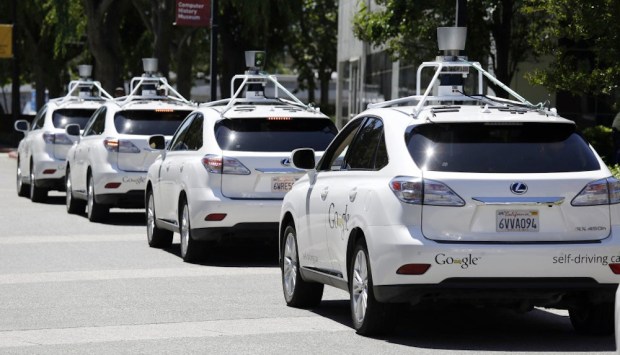Intel, Delphi And Mobileye Team Up To Take On Self-Driving Cars

Intel, Delphi Automotive and Mobileye will be announcing a collaboration later today (Nov. 29) that aims to put them at the forefront of creating the supercomputing technology that will be necessary to get the first generation of self-driving cars up and running.
The areas of focus will be building out the processing power necessary for cars to scan the road, ID pedestrians and meld radar images in real time — all while keeping the wheels turning and the radio on.
The partnership will see Intel will provide specialized computer chips to auto supplier Delphi as well as to Mobileye.
Mobileye is an Israeli company that specializes in vision systems; some of their products are already featured in Tesla vehicles.
The goal is to see, within two years, Delphi and Mobileye bringing a system to automakers that will make it possible for less expensive cars and trucks to drive themselves.
At the center will be a package of Mobileye and Intel chips capable of computing about 20 trillion mathematical operations a second.
“To be able to do all the computation you need for a fully automated vehicle, you can almost never have too much processing power,” noted Glen DeVos, Delphi’s vice president of engineering and services, who further noted in an interview yesterday that eventually the chips will be aiming for nearly three times more processing power than what is planned for the first generation.
An Intel spokeswoman confirmed the partnership. She said Delphi and Mobileye would begin using the Core i7 Intel chip, and later would use a more powerful and unnamed processor to be unveiled in a few weeks.
The move comes as Intel has announced plans to invest $250 million in start-ups working on automated-driving technologies. Mobileye is actually an existing partner — in July the two firms partnered with BMW to provide chips for a self-driving car that BMW intends to begin producing by 2021.
“Intel is looking to get into the automotive space because the demand for processing power in cars is going to skyrocket,” said Michael Ramsey, an analyst at Gartner Group who follows automated driving trends.
But Intel faces formidable competition. Nvidia makes a processing unit that Audi is putting into its newest models, and another that Tesla has just started using its cars.
The Nvidia device is also a bit more powerful than its Intel counterpart — it can compute 24 trillion operations a second.
“Intel is a very powerful company,” said Danny Shapiro, Nvidia’s senior director of automotive technology. “But they are coming late to the game. We have been in this space a long time already.”
